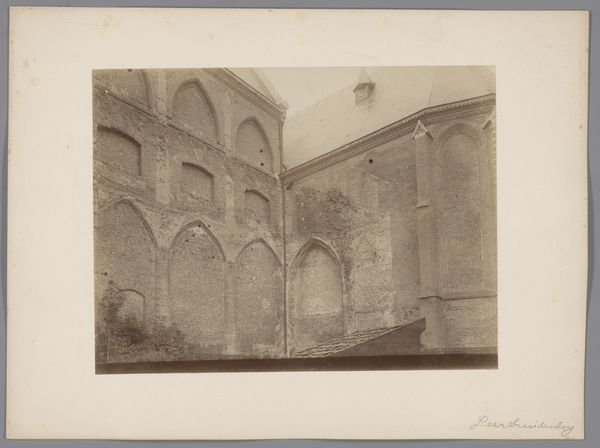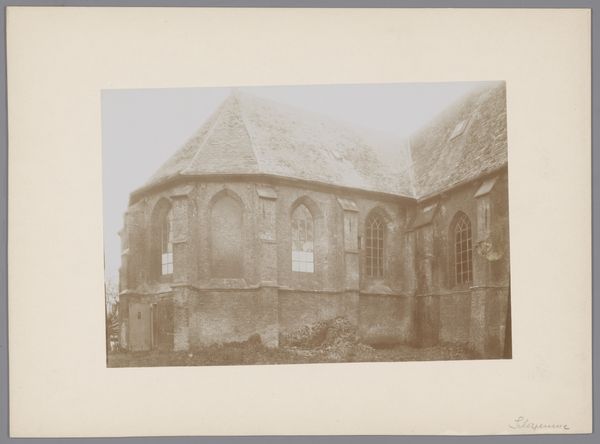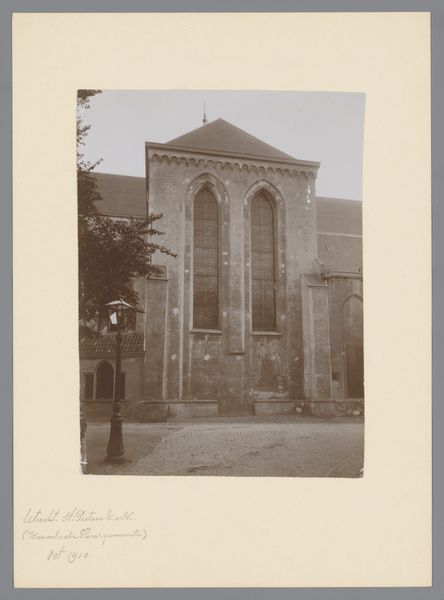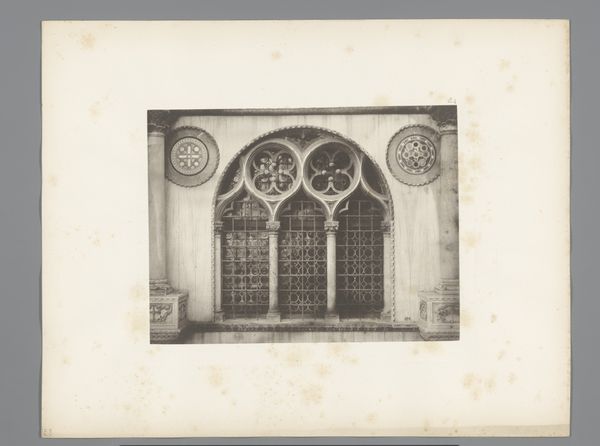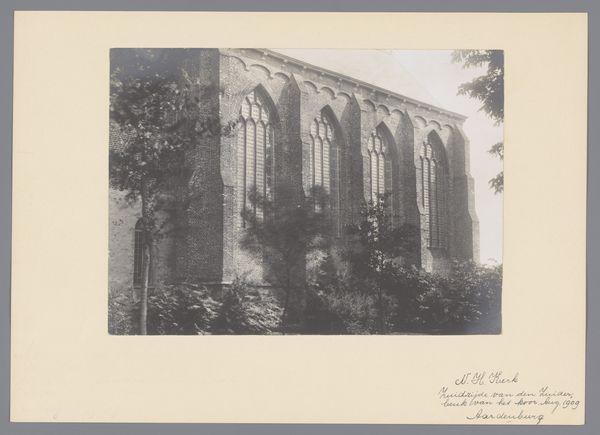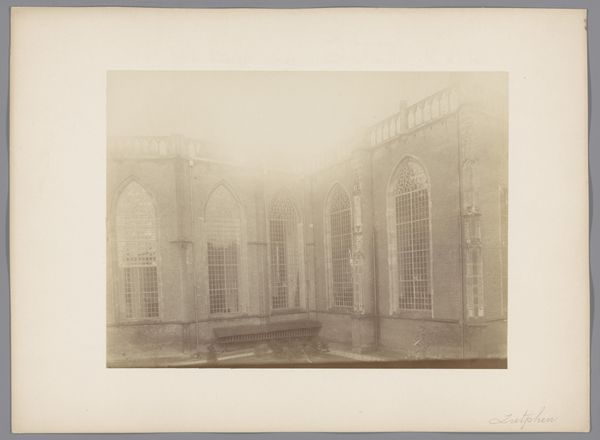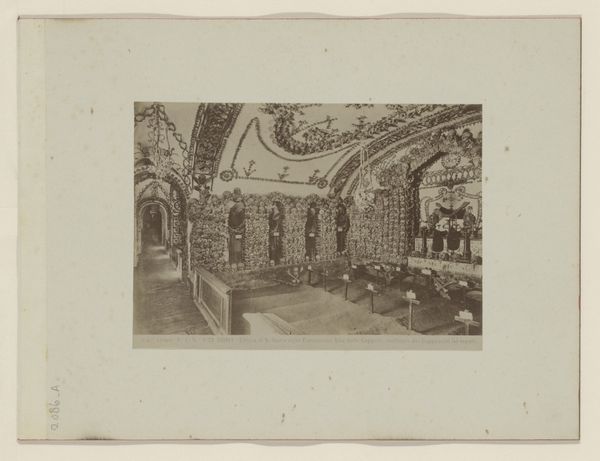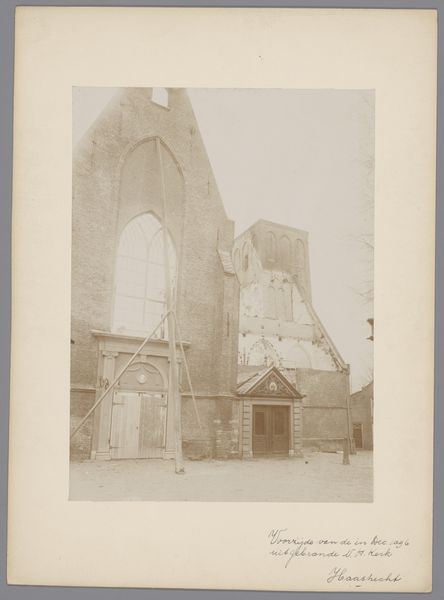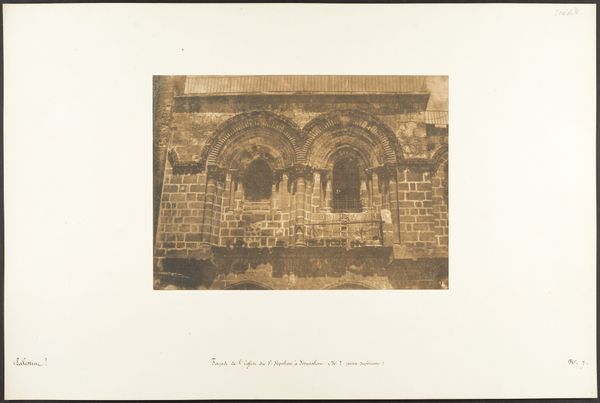
photography
#
photography
#
cityscape
#
watercolor
#
realism
Dimensions: height 166 mm, width 226 mm, height 300 mm, width 358 mm
Copyright: Rijks Museum: Open Domain
Curator: Looking at this vintage photograph by Leonard Vlaanderen, “Aanzicht op kerk in De Rijp, Noord-Holland” from 1921, I’m immediately drawn to its quiet solemnity. The grayscale tones, almost sepia, create a sense of age and reverence. Editor: Yes, it's undeniably serene, but I'm curious about the material conditions that shaped this image. The photographic process itself, the chemicals and the paper used at the time...these elements, I feel, deserve deeper consideration. And even the architecture, which would have dictated material choices from stone or brick to local timber. Curator: Absolutely, and consider the formal choices Vlaanderen makes in this photographic study. Note the composition—the angle emphasizes the church’s height, directing our gaze upwards, towards the heavens perhaps, aided by the geometry of gothic windows as a deliberate strategy to invoke feelings and structure the picture. Editor: Precisely, though from a Materialist perspective, one cannot overlook how a church's construction impacts an entire village and workforce. The stone must have been transported and shaped locally. It speaks volumes about economic relationships. This photo is both documentation and a fragment of human history. What kind of church is this? Is it important locally, is it a family vault or for locals? Curator: The craftsmanship is self-evident when we look closely at these windows, echoing Romanesque styles but filtered through a 20th-century lens. The texture, achieved through darkroom techniques, is fascinating because it simulates impressionist strokes in paint—a synthesis of styles and materials across different art forms. Editor: Indeed! And there were human interactions with this landscape too; notice what appears to be the start of the upkeep of a plot of overgrown foliage and lawn: what tools, labour and skill was applied and is no longer readily visible, and what material conditions of weather and water have allowed such moss growth that softens every sharp contour. A materialist’s reading opens a dialogue on the silent forms of labor. Curator: The shadows across the foreground introduce an element of temporality and perhaps point toward decay: these architectural bones appear very aged from this angle of view. Editor: I see it too! I walk away with the lingering image of that weathered stone facade, a structure raised by countless hands which is a humbling insight beyond pure aesthetics, bringing human dimensions of craft and context that enhance, in different registers, the aesthetic qualities you highlighted initially.
Comments
No comments
Be the first to comment and join the conversation on the ultimate creative platform.
